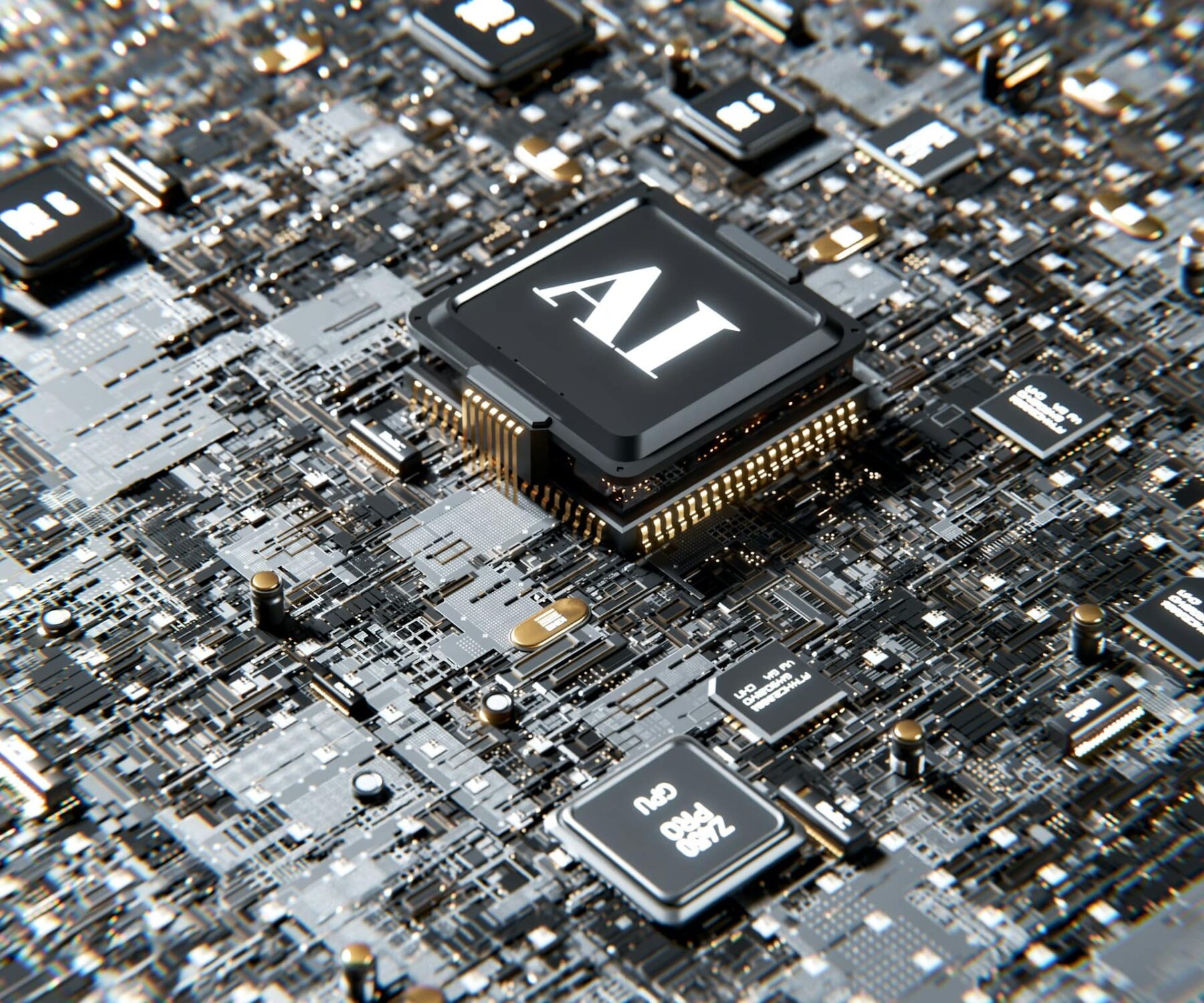The Role of AI in Modern Cash Logistics Systems

Artificial Intelligence (AI) is transforming how banks and financial institutions manage cash. Moving beyond outdated, labor-intensive methods, AI empowers a shift to proactive, data-driven and more efficient operations, using advanced algorithms and predictive analytics. In this article, we will explore the many ways in which AI is reshaping modern cash logistics.
Improving Cash Management with Predictive Analytics
Efficient cash management is crucial for any bank or financial institution. Traditional methods of forecasting cash flow often rely on historical averages, rigid schedules and manual processes for replenishing ATMs. This often leads to scenarios like unexpected cash shortages or unnecessary surpluses that tie up capital and increase security risk, resulting in lost revenue and customer frustration.
AI and automation tools are streamlining these time-consuming, error-prone manual processes. AI algorithms can automatically reconcile cash movements, pinpoint discrepancies and flag exceptions, drastically reducing manual effort and boosting accuracy. AI platforms offer real-time visibility by integrating data from every cash touchpoint: ATMs, cash vaults, cash-in-transit (CIT) providers and bank accounting systems. This creates a consolidated, up-to-the-minute view of cash positions across the entire network, providing instant insights into financial performance and liquidity.
AI significantly enhances efficiency through automated cash processing. AI-powered machines like ATMs and cash recyclers can accurately count, sort and dispense cash, reducing human intervention and minimizing errors. Furthermore, AI systems often provide remote diagnostics and resolution, enabling issues to be diagnosed and often fixed from a distance, cutting down on costly on-site visits.
For compliance and security, AI systems maintain enhanced audit trails by keeping comprehensive digital records of all cash movements. AI turns raw data into actionable insights, generating detailed reports and dashboards that highlight cash flow trends, costs and key performance metrics. This empowers decision-makers to confidently optimize their cash management strategies.
Optimizing Cash Forecasting with Machine Learning
The impact of AI-powered systems extends directly to intelligent inventory cash management, with real-time monitoring and optimization of cash levels. By analyzing vast datasets, including sales figures, lead times and customer behavior patterns, AI algorithms can suggest optimal reorder points and automate replenishment processes for ATMs and bank branches.
AI enhances predictive cash flow forecasting by employing machine learning algorithms from historical data such as ATM usage patterns, transaction volumes and cash demand variations, to identify subtle patterns that human analysis might miss. It adapts to changing conditions by incorporating real-time data, ensuring highly accurate and continuously updated forecasts, helping businesses anticipate their financial needs with far greater precision. This optimizes distribution strategies and minimizes the risk of ATM cash-outs.
AI can accurately forecast withdrawal volumes, incorporating a multitude of external factors that influence cash demand, such as local events, public holidays or even weather patterns. For instance, AI algorithms can predict higher demand during holiday seasons, ensuring ATMs are fully stocked with appropriate denominations well in advance. Conversely, during quieter periods, AI might recommend fewer replenishments, significantly reducing idle cash and lowering operational costs. By analyzing geographic and demographic data, AI can also address regional disparities in cash demand, differentiating between areas with higher physical cash reliance and those prioritizing digital transactions.
Streamlining Cash Logistics Operations with Automation
Cash-in-transit (CIT) services, involving the secure movement of currency, traditionally relied on static, pre-planned routes, which can often lead to inefficiencies, increased costs and potential security risks. AI is revolutionizing CIT with advanced routing algorithms that dynamically determine the most efficient routes for armored vehicles in real time, bringing unparalleled precision to currency movement.
AI constantly monitors live traffic status, accidents and road closures, allowing routes to be adjusted in real time to avoid congestion and delays. This ensures timely cash replenishment while simultaneously reducing fuel consumption, transit times, labor costs and vehicle maintenance costs. Dynamic route optimization ensures that cash reaches its destination precisely when needed, improving the overall reliability of the cash supply chain.
Routes are also optimized to prioritize safer areas or avoid high-risk zones during specific times. AI intelligently matches the right vehicle type and capacity to required cash volumes, preventing inefficient trips and ensuring that Service Level Agreements (SLAs) are met. Fewer unnecessary trips also mean less exposure to potential security risks for personnel and cash. A significant innovation is ‘backhauling’, where CIT vehicles can pick up cash deposits from other locations, like retail stores, on their return journeys. This minimizes empty runs and maximizes the efficiency of each trip.
Enhancing Security with AI-Powered Threat Detection
AI enhances fraud detection by analyzing transaction patterns and identifying anomalies in real time. AI’s advanced algorithms instantly flag suspicious activities that deviate from normal behavior; for example, detecting unusual withdrawals like multiple high-value transfers in a short period or transactions from different locations in quick succession. Machine learning models continuously learn from new data, adapting to emerging fraud trends. Early warnings allow financial institutions to act swiftly and adjust strategies, preventing financial losses while maintaining that all-important customer trust.
Beyond transaction monitoring, AI bolsters physical ATM security too. When integrated with surveillance cameras and sensors, AI can detect suspicious activities around ATMs, such as tampering, unusual loitering or the attachment of skimming devices. It can even monitor ATM software for unauthorized changes or malware, preventing cyberattacks. By combining AI with computer vision, systems can analyze video footage to detect behaviors like unauthorized access to cash vaults, enhancing proactive surveillance and enabling immediate responses to potential risks.
Another significant advancement AI brings to cash point security and reliability is predictive maintenance. AI analyzes real-time sensor data from ATMs, including component temperature, transaction success rates and error codes, anticipating potential hardware failures (like issues with card readers or dispensers) before they occur. The ability to schedule maintenance in advance drastically minimizes costly, disruptive downtime.
These AI-driven innovations in risk management empower banks to identify and mitigate various threats, from ATM cash-out attacks to sophisticated fraud schemes. Real-time processing and advanced threat detection not only safeguard cash assets and protect financial institutions from costly breaches, but also ensure compliance with regulatory requirements, thereby reducing legal and reputational risks.
The Future of Cash Logistics: AI-Driven Innovations
The ATM industry is seeing AI drive innovations toward smarter, safer and more environmentally-friendly banking experiences. Eco-friendly designs are emerging, such as solar-powered ATMs and advancements in touchless interactions facilitated by AI technology.
AI-powered ATMs are expanding their capabilities far beyond simple cash withdrawals. They now support a wide range of services, including digital fund transfers, balance inquiries, bill payments and even the integration of cryptocurrency services. Natural Language Processing (NLP) enables ATMs to process voice commands, further boosting accessibility. Beyond expanded service capabilities, AI is also reshaping security. Facial recognition analyzes and verifies users’ facial features, ensuring only authorized individuals can access accounts. Fingerprint scanning adds another layer of protection by linking transactions to unique biometric data, eliminating PIN theft risks and reducing the chances of fraud.
Within the ATM machines themselves, Edge AI is making them smarter through biometric authentication systems. Cameras and sensors inside can detect unusual activity (such as tampering, blocked card slots or skimming attempts) and analyze it immediately, sending alerts when something suspicious is detected. This allows banks and ATM operators to act faster, reduce fraud, and keep machines operational.
AI-Powered Banking is Here to Stay
The potential for AI in the ATM space is undeniable. By continuously learning from new data and feedback, AI allows banks to transform cash logistics from a necessary, often costly, operational burden to a valuable, strategic asset. The deployment of predictive capabilities, real-time insights and automated optimization means that cash is available where and when it’s needed, at the lowest possible cost and the highest level of security.
For banking professionals and financial institutions, AI can boost operational efficiency, improve customer satisfaction and achieve competitive advantage. For customers, this translates to uninterrupted access to cash and a seamless ATM experience.
To find out more about how Brink’s ATM Managed Services can benefit your ATM operations, please get in touch today.







